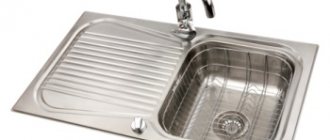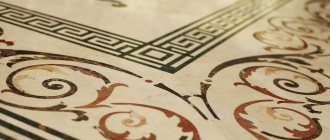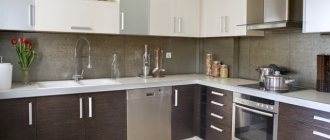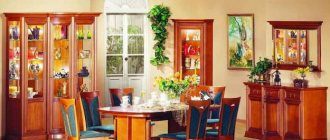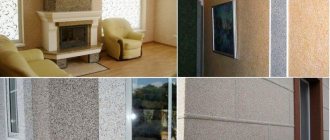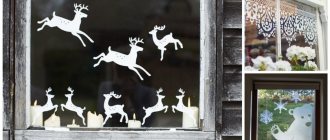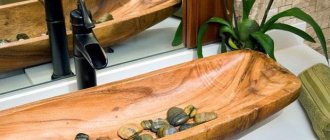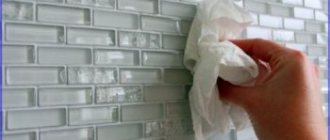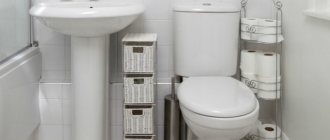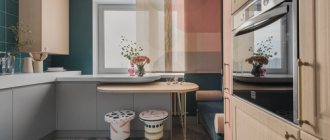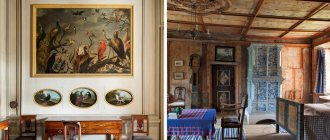Properties and features of floor travertine
Natural travertine is formed at the bottom in those areas where mineral springs emerge, carrying limestone, calcium salt and carbon dioxide.
As a result of the contact of the listed components on the surface of the source and their reaction with air, a sediment forms - calcium carbonate, that is, travertine. This natural stone has an intermediate state between limestone and marble.
It is noteworthy that the extraction of stone is a relatively simple process, since, by focusing on the surface of a reservoir, it is simply “collected”.
Rectangular tiles are most often used for floor finishing, but products are also produced in the form of large-format plates and ready-made compositions.
Travertine floor tiles are laid in the form of a mosaic or decorative panel with a pattern or design. There are several colors of the stone - milky white, cream, light gray, greenish-beige, reddish-brown.
In addition to the natural sample, the manufacturer can offer an artificial alternative. Also, in addition to flooring material, wall material is also produced, which determines the scope of application.
Very often, travertine finishing is done in a bathroom or shower, both on the walls and on the floor. In the bathroom, it can last even longer than porcelain tiles or other ceramic analogues.
The stone looks luxurious and aesthetically pleasing on the floor in the living room or kitchen, in particular on kitchen countertops or backsplashes, a good option for exterior cladding of a house.
How the material is applied and what properties it has
First of all, you need to understand what Travertino is. It is a decorative coating, or rather a material that imitates decorative stones. Its name comes from the name of the rock that aragonites form. It mainly consists of marble chips, sand, and hard aragonite granules.
Travertino was first used as a building and facing stone in the first century. But it still remains very popular and is often used as a building material. It was used in the construction work of the Roman Colosseum, as well as the Vatican Cathedral of St. Peter. In St. Petersburg, travertine was used to decorate the Vyborg metro station. Let's try to list the main properties of Travertino, thanks to which it gained such popularity and retains it for so long:
- it is durable, that is, it is not afraid of external influences;
- it is fireproof;
- it has a large number of shades;
- it passes steam well;
- since it contains natural ingredients (crushed granite, gypsum powder and other components), it is also environmentally friendly;
- it practically does not become dirty, and if there is any contamination, it can be removed with a damp sponge
Decorative plaster Travertino has several varieties, which differ in their main binding component. Silicate decorative plaster is created on the basis of “liquid glass”, which serves as a binding component. It has a fairly high vapor permeability, which allows the surface to “breathe”. She is also not afraid of sudden changes in temperature. If the wall is covered with a silicate coating, it will retain its original appearance for a long time, and cracks, chips or any other damage will not form on it.
In mineral, the main binding component is a mixture of cement or lime. This is the most durable and moisture-resistant of all types of plasters. Having all these properties, decorative plaster Travertino is widely popular. It is used for both interior finishing work and external decoration of facades.
Processing methods
There are many options for processing travertine flooring:
- Polishing. The products are distinguished by a mirror shine and a clearly visible stone texture.
- Semi-polished (glazed) – the tile has a smooth matte surface. The structure of the stone is clearly visible.
- Grinding. The product is characterized by a rough texture. The maximum permissible difference in relief is 0.5 mm.
- Sawing. The result is travertine with a rough, even rough, decorative layer. The permissible difference in relief is 2 mm.
- Bush hammering. The tile collection is endowed with a rough relief with a depth of no more than 5 mm.
- Brushing – artificially aged slabs using brushes.
After processing, it becomes the owner of a unique surface that imitates the natural split of stone (rock effect), artificially aged stones (antique) or natural split brushed with brushes (fur coat effect), etc.
Travertine mining
The most extensive deposits of stone are located in Germany (Stuttgart), Italy (Tivoli) and Turkey, in the area with geothermal springs Pamukkale, which is a miracle of nature. Travertine is mined in mountainous areas where there are bodies of water and volcanic activity. It occurs as a result of a chemical reaction between carbon dioxide found in thermal waters and limestone. Standing water produces a hard slab of travertine, while waterfalls and streams produce soft rock.
READ ALSO: Buy bathroom accessories
Geologists consider travertine to be an intermediate form between marble and limestone.
Advantages
Travertine in the interior is very practical and quite stable, so its installation is possible in any room, which indicates its versatility. Mechanical impacts and other loads are also not terrible - this indicates durability.
In addition, the stone, due to its natural origin, is absolutely safe and environmentally friendly. There are no chemical components or radiation residues in the composition.
Travertine floors have low thermal conductivity. This indicates a minimal probability of heat loss through the floor. This is achieved due to the dense and monolithic structure of the stone. In this case, the porous material can be used under a “warm floor” system.
Like any natural stone and ceramics, travertine is resistant to temperature and humidity changes, which makes it possible to install it in wet rooms (kitchens, bathrooms, showers, etc.).
The coating lends itself well to processing and cutting. This makes installation accessible to any non-professional. Cleaning should be done using a wrung out cloth without aggressive detergents.
Color stability is the next advantage. The decorative base will retain its natural color for a long time and will not lose it from exposure to water and ultraviolet rays.
In addition, the price of travertine is much lower than granite or marble floors - from 1,450 rubles. per square meter, and marble - from 4,000 rubles.
Making plaster for travertine: application techniques
Another advantage of decorative travertine plaster is the possibility of applying it using different techniques - on the one hand, these are additional possibilities in terms of decoration, and on the other hand, it is the opportunity to choose an easier technology for a person who is not a professional craftsman. You understand that some techniques are easier and others are more difficult. There are three most common methods for making decorative travertine plaster.
- Multi-color travertine with a breakdown of the plaster into zones - highlighting dark and light areas, artificially aging the surface, adding gloss, and so on. This technique, as they say, is not for amateurs. It requires experience and skills that are acquired exclusively through practice.
- Classic travertine is an ordered striped pattern. Despite the apparent simplicity of the texture, it is not so easy to apply. It's all in the master's hand, which must be filled. In general, everything related to the application of any type of decorative plaster, including travertine, is closely connected with the hands of the master - experience is needed and nothing more. Clearly controlled movements of the instrument are the key to a high-quality and beautiful final result.
- Torn decorative travertine plaster - this surface can be described as a chaotic accumulation of layers of material and various shades of color. The concept of “chaotic” in this case is very conditional - it is ordered chaos, which in the hands of a skilled craftsman turns into a drawing. So to speak, a picture within a picture, in which the structure of travertine does not play a primary role - the “ornament” created by the layer of plaster and its color comes to the fore.
Decorative plaster travertine photo
This concerns complex techniques for applying decorative travertine plaster. In addition to them, there are also simpler technologies for simulating this natural stone - an economical option that is available to almost any person who knows how to use painting and plastering tools.
Disadvantages of travertine
- The porous structure strongly absorbs water left on the surface for a long time, which requires treating the floor with special protective compounds. This is typical for a material whose structure is as close as possible to limestone.
- Durability is inferior to granite or marble floors;
- It is not recommended to lay tiles in areas with high traffic due to the lower density of the coating compared to other natural stones;
- Limited color range, characteristic of all natural materials.
Today, travertine is again entering the market of construction and finishing materials. It becomes an excellent decoration and is used in decorating houses and apartments. Due to the external similarity of some varieties of this species to wood, it goes well with furniture, as well as with other facing materials.
The porous structure of the stone makes it possible to fill its cells with a special transparent solution, and thus preserve the attractiveness of the stone.
Travertine finishing is widely used to create antique style exteriors and interiors. To do this, its surface should be treated, increasing the porosity and randomness of the scattering of its cells.
Travertine is often puttied before use. In this case, the color of the putty must match the color of the stone itself. In this form, it can be successfully used for exterior decoration of building walls in harsh climates with significant sub-zero temperatures. In addition, the puttied mineral is better polished.
Untreated travertine is best used in the interior. This is due to the low resistance of the material to the negative effects of the external environment. This stone is used to make: tiles, window sills, stairs, countertops, bar counters, and other interior elements.
Recently, along with the natural mineral, its imitation has become widespread. Artificial stone is made from cement, and it is similar to natural stone in texture and color.
ADVANTAGES OF TRAVERTINE STONE
More information about the properties of travertine and its colors can be found here
This natural material has many positive and unique properties, the main ones of which are: wear resistance; easy to cut; resistance to temperature changes; a light weight; moisture resistance; frost resistance; porous structure; excellent heat and sound insulation properties; long service life; affordable price; environmentally friendly material.
The scope of application of travertine in construction is so wide that sometimes it seems as if a large number of types of products can be made from this natural material: decoration of door and window openings; floor or wall tiles; window sills; vases and statues; countertops; bar counters; stairs and much more.
The quality of natural material allows us to produce almost any and a wide variety of products from it. Travertine lends itself perfectly to processing; it can be polished, cut and sawed without much difficulty. The high frost resistance of the stone allows its use not only for interior decoration, but also for exterior decoration. Floor coverings are most often made of dark-colored slabs; they are more resistant to friction.
Natural travertine has long proven itself only from the best sides. This material became the basis for countless monuments of Italian architecture. It is used to decorate the facades of the most modern buildings in Germany and America, as well as the interiors and exteriors of many individual properties.
The excellent physical and technical properties of travertine tiles allow them to be used in any climatic conditions. The light weight of the facing material greatly simplifies its installation. The absence of sliding moments and the highest wear resistance make travertine an indispensable floor covering.
A wide variety of stone treatments will make the interior of a bathhouse, bathroom or shower room exquisite and unique. The successful use of natural material for finishing “hot” rooms is possible due to the high heat resistance of the material. Travertine tiles made from natural stone are also used for arranging pool bowls.
A wide variety of material textures allows us to produce unique countertops for kitchens, bar counters for cafes and restaurants, window sills in private homes, as well as a magnificent reception desk for an office. The fireplace can be made of solid stone - this is comfort and warmth in every home.
Flights of stairs, even just steps made of travertine, will become a worthy decoration for individual buildings, as well as business centers. Pleasant and easy to work with, the natural material allows the production of luxurious decorative elements to decorate building facades: cornices, impressive columns and luxurious balusters.
Travertine is also successfully used for finishing the plinths of buildings. Moreover, a “fur coat” or facing tiles made of natural travertine is successfully combined with various finishing materials. This is confirmed by the large number of municipal buildings of the last century: theaters, cultural institutions, administrative buildings, prefectures, etc.
Travertine in the interior
Travertine is one of those finishes that can be used in so many different ways and looks beautiful no matter how it is used. It can be used absolutely anywhere, from bathroom walls and kitchen backsplashes to outdoor pool cover. We bet you used to think travertine was just for floors. We advise you to think again.
And these 10 luxurious ways will help you with this.
1. Choose the right type of travertine for your room
Travertine is often confused with marble or limestone, but it is actually a form of rock with sedimentary properties and has a beautiful dark yellow matte color that is not found in most other natural stone materials. When choosing travertine for your room, consult with professionals. Find out which varieties, colors and variations will be appropriate in your case.
2. Add grandeur to your front entrance with travertine floor tiles.
If you want to add a luxurious aesthetic to your foyer, choose travertine. Known for its uneven or chiseled surface, travertine will look stunning in any home of any style. For this purpose, you can use both travertine mosaic tiles and large stones. This material is one of those few that can give a sophisticated look to your front entrance.
3. Large travertine stones and bathroom
When it comes to your bathroom, why not try travertine in an extra large format? As an option, it is possible to use travertine tiles with veining. It is beautiful even on its own, since each tile is unique, because it is created by nature itself. If you want to use it only in certain areas, this could be the shower, the backsplash behind the sink, or the sides.
4. Add a natural touch to your design
Travertine is a very ancient material that has been used in many monumental buildings around the world. At the same time, today it is used in the most luxurious and modern homes. Determine whether the type of travertine you choose suits your interior. And at the moment there are so many of these species that it’s simply dizzying!
5. What to keep in mind when choosing travertine
One of the beauties of this magnificent stone is its variety of colors and patterns, but it also has one drawback - it is prone to scratching and rubbing easily. Depending on the roughness of the surface, polished travertine may last longer than the same one with a matte finish. Travertine can also be porous and should not be used where grease, water or other liquids could soak into it and ruin the overall look. Therefore, when designing such zones, you should contact a specialist.
6. Travertine in your bathroom
Centuries ago, travertine became a tried and true building material, so your bathroom is the perfect place to showcase its versatility, for example, travertine mosaic tiles make a beautiful design for bathroom walls. Travertine tiles can create a stunning geometric pattern that, combined with the natural matte finish of the material, will transform any shower stall into a “work of art.”
7. Add sophistication to the exterior
Travertine can not only decorate your interior, but also your exterior. And it doesn’t matter whether you want to use it for garden walking paths or to create low decorative walls - it will work in any case. Travertine, like many other natural stones, can retain its beauty for a long time, and over the years it will become even more beautiful.
8. Using polished travertine
When you see polished travertine, you immediately feel a sense of luxury. Using large travertine stones will help create a pleasing illusion of opulence and splendor that many other materials cannot achieve. Combine it with your favorite furniture or an open fireplace, and you will hear only flattering comments about your interior from your guests.
9. Combine light and dark travertine finishes
To add even more luxury, mix light and dark travertine finishes with dark wood to add drama to your design. Contrast between the color and texture of the finish can be created in the kitchen, bathroom or living room. This can be done similarly with the furniture in the living room and dining room. Thus, a dining table or coffee table made of rich mahogany will look more dynamic against a different travertine flooring.
10. Using travertine you can create a masterpiece kitchen
Your kitchen is the only room in which you (if you are a woman) spend a fair amount of time, and sometimes bring company there. So why not use travertine here? This could be the back panels behind the sink, countertops, shelves, or flooring - you see, what a wide choice! You can also consider the option of travertine mosaic tiles. Consider hiring a professional to help create a one-of-a-kind design for your kitchen using travertine tiles.
5 reasons to use travertine indoors
If your goal is to create a truly warm and stylish home using natural stone (and natural materials are always in trend), then you should buy travertine for your home. It has a unique natural pattern, due to which it is often confused with marble, but unlike marble, this stone is lighter and warmer. In addition, it has other, no less important features.
- Wide choice of structures and colors. Natural travertine tiles can be either porous, rough, polished or smooth. For classic interiors, designers advise choosing the first option, but for modern high-tech, neoclassicism, minimalism, you should pay attention to smooth tiles. Different levels of finishing and sanding can produce a wide range of textures, from a dense, glossy finish to a rough, wood-like finish.
- High thermal insulation characteristics, thanks to which the surface of the stone can transfer heat into the room. At the same time, it will never feel cold to the touch.
- Quite strong. Despite the porous structure, travertine tiles have high shockproof properties.
- Easy care. The stone surface is quite easy to care for - just wash it when it gets dirty. At the same time, the stone is not afraid of abrasive detergents.
- Moisture resistant. This is why travertine finishing can often be found in bathrooms and swimming pools.
Decorative plaster photo in the interior of the hallway corridor
The hallway is, if not the main, then quite an important element of every home. This is room number one, if not in importance, then in order. This is a showcase that introduces guests to the house, its style and the owners themselves. The way the hallway and corridor are arranged forms the first impression of the entire house.
A distinctive feature of this coating is the presence of the characteristic structure of Tibur Travertino stone, limestone tuff from Italy
Often, the hallway and corridor do not have sources of natural light. In this regard, the right step when choosing a color scheme for finishing these rooms would be to choose light and bright colors.
When planning the renovation of the hallway and corridor, do not forget about small but important details. To highlight the texture of the wall covering, use a well-thought-out lighting organization system . Add wall lights or additional spotlights to the main light. The volumetric surface looks quite attractive.
Textured plaster in the interior photo of the hallway, skillfully illuminated by spotlights, looks noble and expensive
Mirrors in the hallway are not only acceptable, but also desirable. Regardless of the size of the hallway, a mirror will always be appropriate. Especially if we are talking about a small or narrow hallway. This can be one large mirror in a frame or several small ones that form a complete composition.
Decorative plaster in the interior of the hallway in combination with warm wood is a worthy choice for connoisseurs of industrial style
Considering that the hallway is a room where we do not spend significant time, and it serves only for storing outerwear and welcoming guests, not many try to make it unique and original. Most focus on the living room, kitchen or bedroom. This is understandable. However, as a reminder, the entryway is the calling card of the home and a preview of what guests can expect to see inside the home.
Venetian plaster in the interior of the hallway with a wet silk effect
An attractive, elegant and durable coating is the result of skillful work and the correct selection of the right components. And this result makes it possible to find new life for your hallway. The choice of this unique finishing material is a simple decision for those who are looking for unusual decorative effects and excellent quality.
Venetian in gray tones with a velvet effect in a narrow corridor
Venetian decorative plaster is suitable for almost any room and its elements: walls, columns, ceilings, beams. And if we talk about a product with a classic composition, it is characterized by high resistance to mechanical stress, elegance and functionality. Resistance to moisture and dirt, vapor permeability and ease of maintenance make the Venetian a good candidate for use in corridors and hallways.
The combination of sophisticated Venetian and rough stone is quite natural, as is the combination with other natural materials - wood, glass, metal
When carrying out renovations in the hallway or corridor, pay attention to the choice of flooring. When using decorative plaster for wall decoration, the floor covering should match it not only in color, but also in texture. What is meant here is not to be the same or copy it, but to be combined.
Natural, muted colors create an atmosphere of calm and tranquility
High-quality floor tiles, laminate, even well-chosen linoleum will be an excellent addition. Most types of floor coverings, provided they are professionally selected, are perfectly combined with walls made of decorative plaster. of classic lime plaster , in the form of polished stone in any of the characteristic types of such finishes: matte, glossy or especially glossy, is ideal
